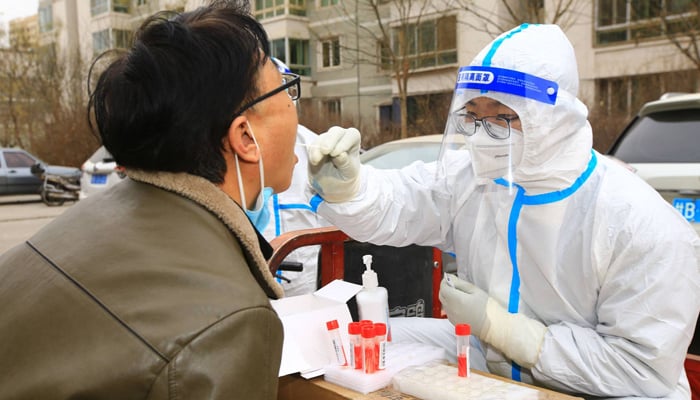This study may make you believe about the origins of COVID-19
Expert says some of the first infected people had not visited Huanan, despite its links with the zoonotic virus
March 15, 2024

A new study has sparked another debate about the origins of the coronavirus that spread throughout as earlier it has been widely categorised as a disease that possibly originated from Wuhan's wet market in China.
There have been conspiracies about the virus lab leak — such as the Wuhan Institute of Virology in China.
However, the study using Grunow-Finke assessment tool revealed that its origin is unnatural, according to Metro News UK.
The study noted that the first case of COVID-19 was reported in December 2019 near the WIV and the Wuhan Center for Disease Control and Prevention.
A researcher at the University of New South Wales in Australia Dr Xin Chen said: "The WIV had been conducting experiments involving SARS-like coronavirus in bats since 2010. One of the bat viruses being studied at the WIV shares a 96.1% homology [match] with SARS-CoV-2, something which was only revealed after the pandemic began."
"The WIV was only 8 miles away from the Huanan Seafood Wholesale Market, where some of the initial cases were linked to."
The researcher said that the WHCDC was also studying coronaviruses, and in December 2019, it moved to a location 280m from the Huanan Seafood Wholesale Market.
This move "may have increased the chance of a laboratory accident", according to Dr Chen, adding that such accidents are common and it is possible that such highly contagious pathogen-infected set off an epidemic in the community.
Dr Chen added that some of the first infected people had not visited Huanan, despite its links with the zoonotic virus.
“It is also worth noting that evidence of an intermediary animal host – necessary for this theory – is lacking.”
Dr Abrar Chughtai, an epidemiologist at the University of New South Wales, explained: "In September 2019, the WIV removed a large virus database containing approximately 20,000 specimens from bats and mice that had previously been accessible to the public."
He added that China did not provide "all requested information, such as laboratory records to the World Health Organization — investigating the origins of Covid-19 in 2021.
Dr Chughtai also pointed out poor protection protocols while handling bats. He also said some of them were admitted to hospitals with Covid-like symptoms.
The study published in the journal Risk Analysis also mentioned that its assessment tool cannot prove Covid-19 lab leak, however, it said the link cannot be dismissed.











